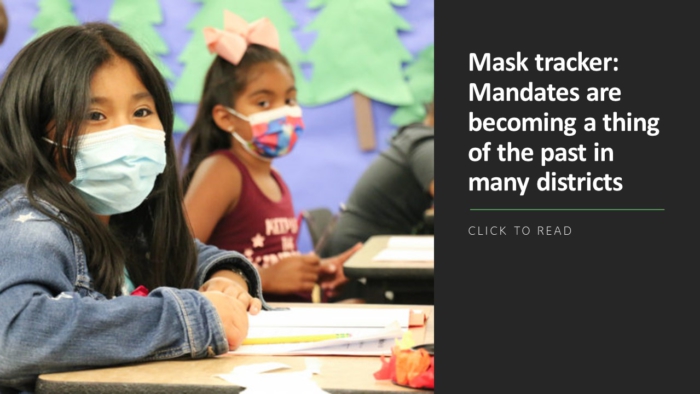As educators grapple with a new wave of behavioral problems, they should give students space to rebound without lowering expectations, a school counselor says.
Students and teachers were jolted heading into a new school year expecting a return to some degree of normalcy only to be hit with the omicron surge and other COVID-related disruptions, says Matthew Berry, a counselor at Ritenour Husky Academy, an alternative high school in Missouri’s Ritenour School District.
“We are really needing to do a lot of more reteaching and allowing opportunities for students to talk,” Berry says. “Students have experienced a lot of loss and they don’t necessarily have the ability or skills to cope with that.”
To head off behavioral issues, it’s important to ask students what they need right now and quickly address their concerns while also remaining focused on their academic plans and goals. Counselors and other educators should also bring families into the process to collaborate around support and solutions, Berry says.
“This doesn’t have to be our new normal,” Berry says of the behavioral issues now plaguing schools.”The things we expect of our students and each other hasn’t changed but we have the flexibility to change things and provide supports.”
Prioritizing student voice
Many of this year’s 8th-graders at Charles N. Scott Middle School near Chicago had not attended school in person since they left school as 6th-graders in spring 2020. Most were on remote learning for the larger part of 2020-21, during which they suffered substantial trauma, loss and isolation, says Lydia McNeiley, lead counselor at the school, which is part of the urban School City of Hammond district in Indiana.
That anxiety was only heightened this year when kids returned and had to adjust to wearing masks and eating lunch in a cafeteria with as many as 200 other students, McNeiley says.
“We started the school year assuming what we thought students needed,” she says. “But as the year has progressed, it’s been all about student voice and listening to what they’re going through and changing my plans based on what they need.”
More from DA: How schools are trying to win the battle for better behavior
She has been hosting small support-style groups for students focused on anxiety, self-esteem and other key social-emotional subjects. But even in these supportive spaces, students have suffered anxiety about interacting face-to-face after communicating mostly by text and social media since the pandemic began.
The school has also adopted the Anti-Defamation League’s “No Place for Hate” curriculum that allows students to engage in anti-racism and anti-bias and other diversity, equity and inclusion issues.
Finally, the district is expanding peer-mentoring programs to ensure all students are getting support—not just those who often get the most attention, such as honor students and those who most often get into trouble. “We want to make sure we’re not missing that middle group, who can often be the least vocal,” she says.
Academic defense mechanisms
Ultimately, administrators working to manage behavior will have to figure out how to prioritize academic recovery without exacerbating trauma among students and staff, says F. Chris Curran, an associate professor of educational leadership at the University of Florida’s College of Education. “We need to think about not just making up for learning loss and accelerating learning but doing so in ways that are communicated clearly and implemented with less pressure,” says Curran, who is also policy director of the Education Policy Research Center.
He suggests hands-on labs and similar activities that allow students to get back into classrooms and collaborate with friends from whom they may have been separated.
Teachers and educators, meanwhile, should avoid the temptation to resort to harsh disciplinary measures—such as suspensions—as they also readjust to classrooms and cope with their own personal stresses.
“The best defense is good offense,” he says. “It’s a time to focus on effective instruction and exciting lessons, which can be more powerful than punitive measures or rules. It’s time to innovate academically and get students engaged again so they’re more interested in lessons than they are in disruptions or misconduct.”
Schools should rely more on counselors and mentors to intervene with students who are having behavioral issues. Restorative circles and groups discussions can also be effective in getting to the academic and social causes of misbehavior.
“When students misbehave, it’s not a manifestation of them being a bad student,” Curran says. “When a student sits in class and is struggling to understand the lesson, one way to respond is to act out behaviorally—it’s a defense mechanism against showing uncertainty.”
More from DA



